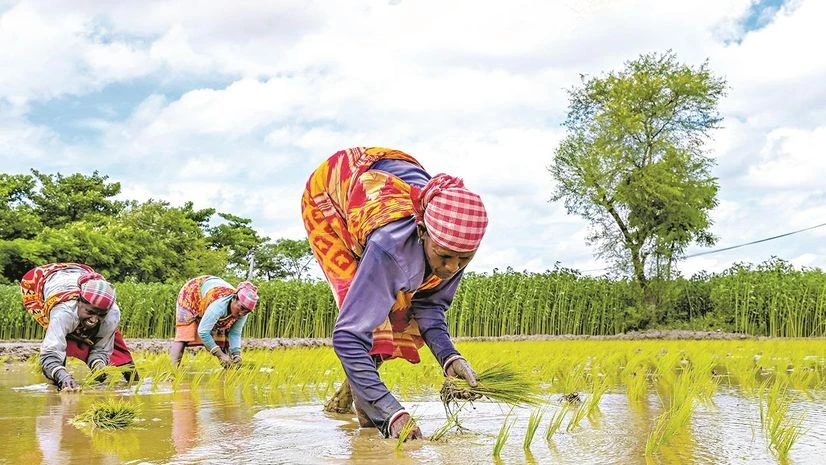)
Rainfall in India has been more than 7 per cent above normal for two weeks
As of September 17, the area sown for Kharif crops was 0.1 per cent above the typical acreage and 2.2 per cent more than last year’s figures. Specifically, paddy sowing saw a 2.1 per cent increase, reaching 41 million hectares compared to the five-year average. However, the area dedicated to pulses was 6.1 per cent lower, totaling 12.8 million hectares, said the report citing data provided by the Agriculture Ministry and the Central Water Commission.
The acreage for oilseeds and coarse cereals exceeded normal levels and that may help alleviate price pressures. However, the planting of cash crops like jute and cotton fell by over 10 per cent compared to the five-year average.
Rainfall in India has been more than 7 per cent above normal for two weeks, with 29 states experiencing average to above-average precipitation. As of September 17, rainfall was 7.5 per cent higher than the norm. In particular, five of the eight Southern states and four out of seven central states received more rain than usual.
In contrast, the northern and eastern regions are facing deficits. Manipur has experienced the most significant shortfall at 32 per cent below normal, followed by Nagaland with a 29 per cent deficit and Arunachal Pradesh with a 27 per cent shortfall. Among the larger states, Punjab is facing a 26 per cent rainfall deficit, and Bihar has seen a 25 per cent reduction from the average, the report said.
The low rainfall in Punjab has led to reservoir levels falling to 57 per cent below the average, while Bihar’s reservoirs are 10 per cent below normal capacity. On the other hand, reservoir levels in other regions remain stable, with an 18 per cent surplus as of September 12. Southern reservoirs are the fullest, with levels 35 per cent above normal, followed by western India at 23 per cent above average, the report said.
First Published: Sep 18 2024 | 1:21 PM IST


































